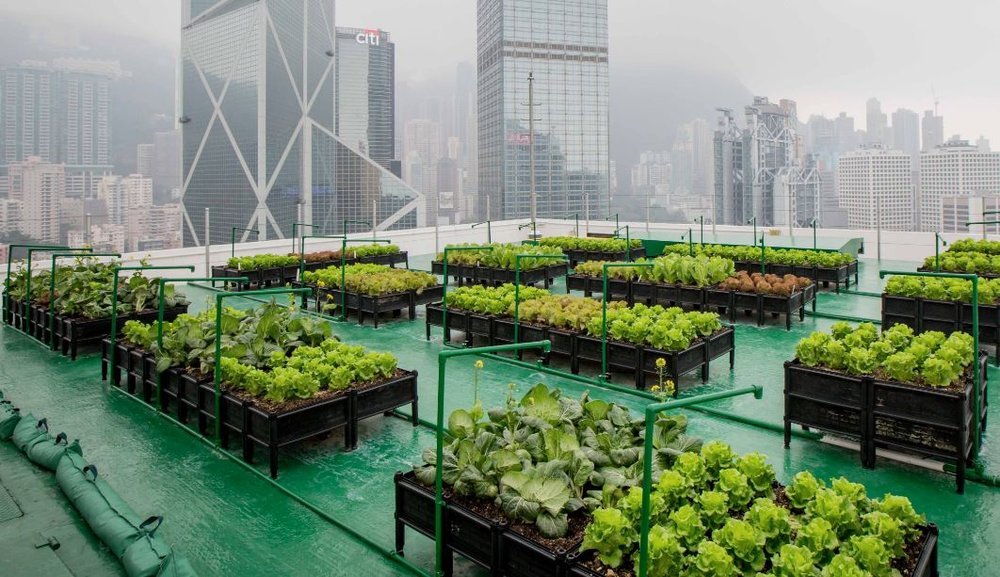Urban farming and vertical gardens in architectural design
- By -Peter
- Posted on
- Posted in Modern Architecture
Urban farming and vertical gardens are revolutionizing urban landscapes by transforming buildings into sustainable hubs of greenery and food production. Here’s a comprehensive exploration of how these practices are reshaping architectural design and enhancing urban living.
1. The Rise of Urban Farming
Sustainable Food Production:
- Local Food Supply: Cultivating fresh produce within cities to reduce transportation emissions and support local economies.
- Community Engagement: Fostering community involvement through shared gardens, farmers’ markets, and educational programs.
2. Benefits of Vertical Gardens
Green Infrastructure:
- Air Quality Improvement: Filtering pollutants and CO2 emissions while reducing the urban heat island effect.
- Aesthetic Enhancement: Beautifying urban environments with lush greenery and vibrant plant life.
3. Integration into Architectural Design
Design Considerations:
- Vertical Farming Systems: Implementing hydroponic or aeroponic systems on building facades or rooftops for efficient space utilization.
- Modular Green Walls: Installing modular systems that allow for easy maintenance and reconfiguration of vertical gardens.

4. Promoting Biodiversity and Ecosystem Services
Ecological Benefits:
- Habitat Creation: Providing habitats for pollinators, birds, and beneficial insects that contribute to urban biodiversity.
- Stormwater Management: Absorbing rainwater and reducing runoff to mitigate flooding and improve water quality.
5. Social and Educational Opportunities
Community Impact:
- Food Security: Increasing access to fresh, nutritious food in underserved urban neighborhoods through community gardens and urban farms.
- Educational Programs: Educating residents, schools, and businesses about sustainable farming practices and environmental stewardship.
6. Technological Innovations
Smart Farming Solutions:
- IoT Integration: Using sensors to monitor plant health, humidity levels, and nutrient requirements for optimized growing conditions.
- Energy Efficiency: Incorporating renewable energy sources and energy-efficient technologies to power urban farming operations.
7. Economic Viability and Job Creation
Local Economic Development:
- Entrepreneurship: Supporting local farmers and entrepreneurs in developing urban farming businesses and sustainable food ventures.
- Green Jobs: Creating employment opportunities in agriculture, landscaping, and urban agriculture-related industries.
8. Policy and Planning Considerations
Regulatory Support:
- Zoning and Land Use Policies: Encouraging the integration of urban farming and green infrastructure into urban planning and development regulations.
- Incentive Programs: Providing financial incentives, grants, and tax breaks to promote investment in sustainable agriculture projects.
9. Cultural and Culinary Heritage Preservation
Local Identity:
- Cultural Preservation: Celebrating local culinary traditions and heritage crops through urban farming initiatives and community-supported agriculture.
- Food Diversity: Promoting the cultivation of diverse crops and heirloom varieties that reflect cultural diversity and dietary preferences.
10. Future Directions in Urban Agriculture
Innovation and Collaboration:
- Vertical Farming Skyscrapers: Designing high-rise buildings that integrate extensive vertical farming systems to maximize food production.
- Biophilic Design: Incorporating biophilic principles to reconnect urban dwellers with nature and improve overall well-being through green architecture.
Conclusion
Urban farming and vertical gardens represent innovative solutions to enhance sustainability, promote urban biodiversity, and foster community resilience in cities worldwide. By integrating these practices into architectural design and urban planning, cities can create healthier, more resilient environments that support ecological balance and human well-being. As urban populations grow, the adoption of urban farming and vertical gardens offers promising opportunities to build sustainable, inclusive, and vibrant cities for generations to come.
3.5



